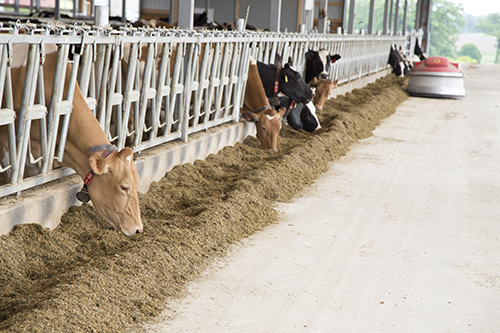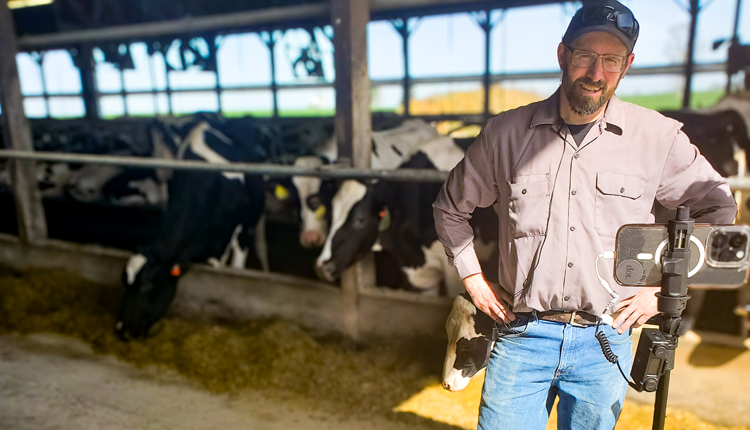
Forage digestibility can be a game changer. For dairymen who were banking on the harvested tons to add some breathing room back in their forage budget, a crop like 2014's provided little relief. While the harvested acres yielded well, low digestibility has been a common theme based on lab analyses. The need to feed new crop corn silage, combined with shorter day lengths, has resulted in lower milk production and high components.
In a recent bulletin from Vita Plus, Rod Martin, dairy technical services team, highlighted what many nutritionists are seeing out in the field:
- Milk production is 4 to 8 pounds lower than expected.
- Fat tests are running well above 4.0 percent in Holstein herds.
- In amino-acid balanced herds, protein tests are running as high as 3.4 percent.
- Consultants are adjusting diets by elevating starch levels and adding by-products to improve digestibility. Even with these adjustments, milk production still lags.
Due to nutrition, environment and management interactions, it is unlikely that a single intervention will alleviate low milk production. Below are a few strategies to consider:
- Adjust forage ratios: If possible, incorporate more of the highly digestible forages by blending multiple haylage crops.
- Add more properly processed starch to the diet: Consider increasing the starch level up to 30 percent in the total diet. However, it's imperative to watch for signs of subacute ruminal acidosis since you have less room for error at these higher starch levels.
- Incorporate digestible by-products: Depending on your location, you may have access to good buys on by-products that can improve overall ration forage digestibility. Corn gluten feed, soy hulls and beet pulp have high NDF digestibility.
- Raise monensin levels: The additive, which can be fed at levels up to 22 grams per ton of dry matter, improves dietary energy efficiency.
- Consider other calories: Bypass fat is an energy dense product that may or may not be a good economic fit to consider.

The author, Amanda Smith, was an associate editor and an animal science graduate of Cornell University. Smith covers feeding, milk quality and heads up the World Dairy Expo Supplement. She grew up on a Medina, N.Y., dairy, and interned at a 1,700-cow western New York dairy, a large New York calf and heifer farm, and studied in New Zealand for one semester.











